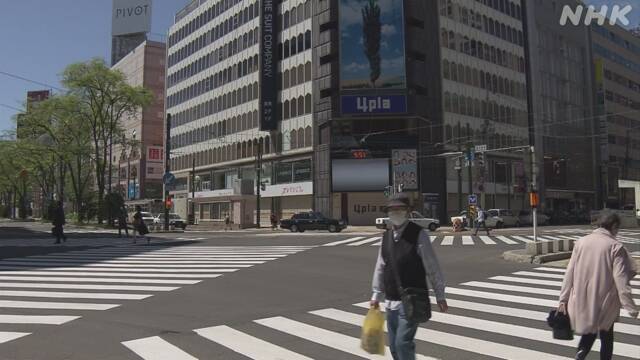Continuing to declare emergency situation 50 to 60% decrease on 21st on May 21 and 11:43 on May 22
On Thursday, the 21st, the number of people sent out decreased by 50% to 60% in 1 prefecture and 3 prefectures in the Tokyo metropolitan area where the declaration of emergency was continued and in Hokkaido, compared to before the spread of the infection.
NTT Docomo is collecting data from 47 prefectures nationwide in a form that protects privacy, based on information from mobile phone base stations.
As a result, in 1 metropolitan area and 3 prefectures in the Tokyo metropolitan area that continue to declare emergencies, 61.5% around Shinjuku Station in Tokyo compared to the average on weekdays from mid-January to mid-February, before the infection spread. It decreased by 57% around Yokohama station, 55.6% around Omiya station, and 50.1% around Chiba station.
Also, the area around Sapporo Station was down 54.9%.
On the other hand, in Kansai 2 prefectures and 1 prefecture where the emergency declaration was released on 21st, the number of people increased compared to the previous day, and the decrease rate from before the spread of infection was over 60% so far in Osaka. Only around 51.9% in Umeda.
In addition, there was a decrease of 58.1% around Kyoto Station and 40% around Sannomiya Station in Hyogo Prefecture, both of which decreased compared to the previous day.
In other areas, the rate of decrease was much lower than 50% in many areas, with a decrease of 39.2% around Nagoya Station, 31.2% around Fukuoka Tenjin, and 27.4% around Sendai Station.

